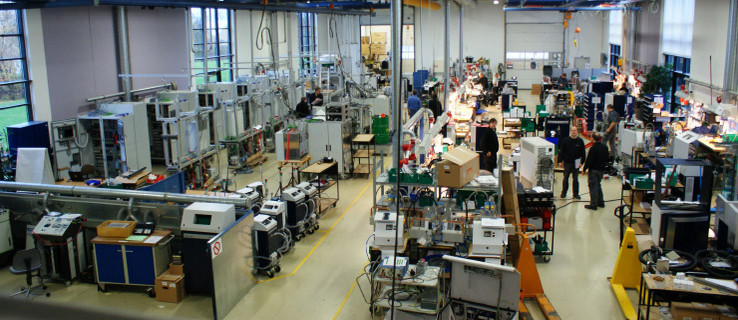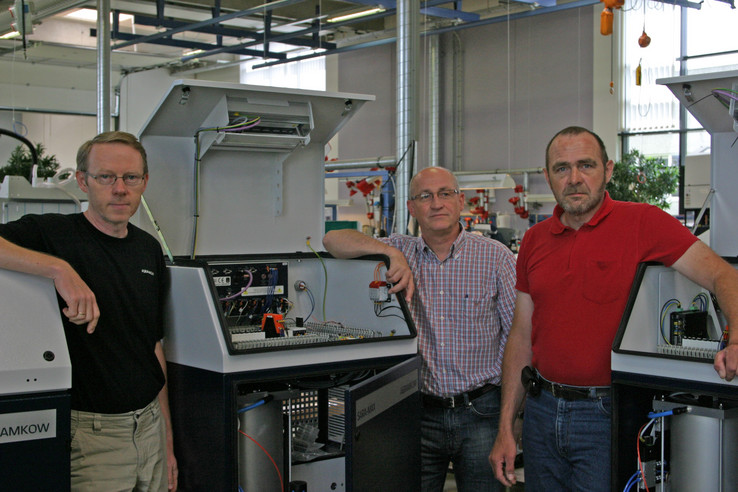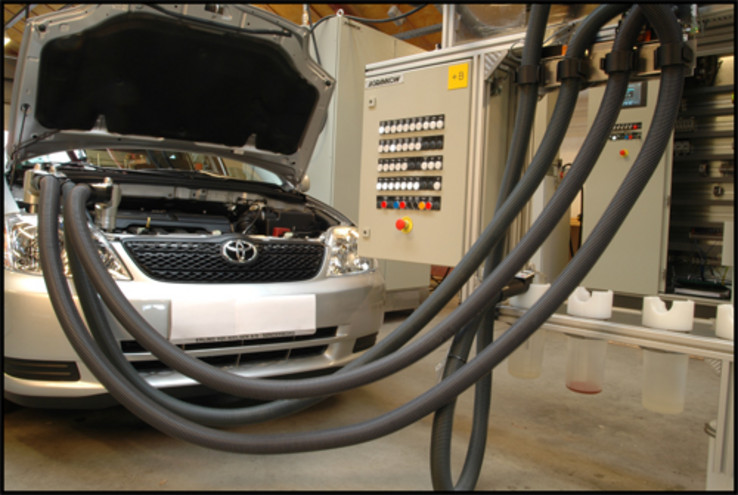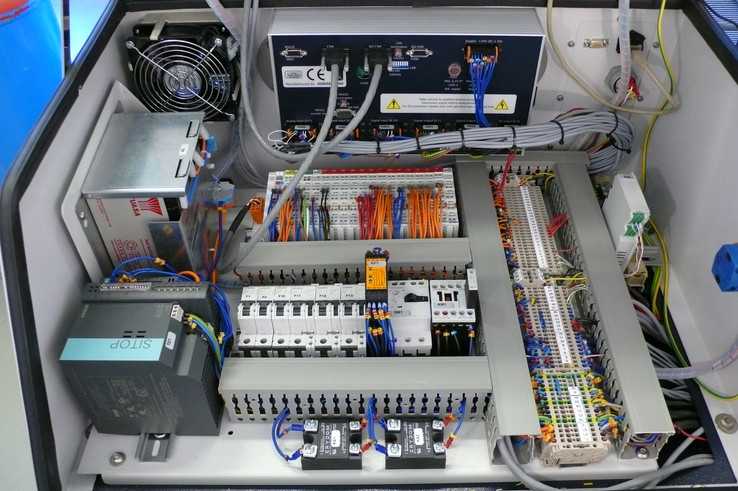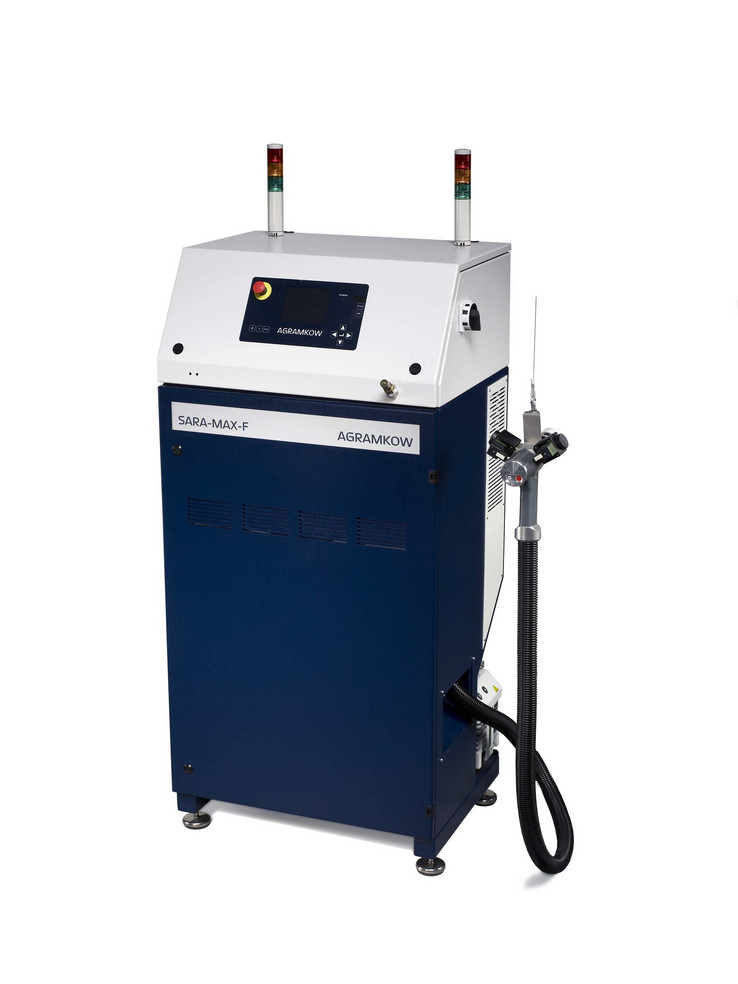Better way to produce product documentation
Electrical, fluid and instrumentation and control engineers designing in EPLAN can share project data with each other directly, or with their mechanical engineering colleagues via a company’s ERP system or other interface.
One of the great strengths of the EPLAN Platform is its capacity for different engineering disciplines to share data, a source of major productivity savings. Electrical, fluid and instrumentation and control engineers designing in EPLAN can share project data with each other directly, or with their mechanical engineering colleagues via a company’s ERP system or other interface. This accelerates projects, including the production of documentation. That’s been the experience of AGRAMKOW Fluid Systems A/S of Sønderborg, Denmark since it integrated production of I/O lists and electrical and fluid engineering in EPLAN. All component symbols and names are common to all disciplines now and all changes and corrections made in one are applied to all. Each machine a one-off project
AGRAMKOW Fluid Systems develops, manufactures and markets fluid-filling, testing and production line information systems for refrigerator, air conditioning and automotive manufacturers around the world. This company, part of the AGRAMKOW group, is also a market leader in manufacturing equipment that enables refrigeration producers in developing countries to meet the Montreal Protocol to replace ozone-depleting CFC refrigerants with eco-friendly refrigerants. “The appliance business area is characterized by standard products, but this is, in fact, a one-off production since we have about 4,350,000 basic versions that can be completed from stock models before delivery,” says Bjarne Lund, process department manager. In the automotive industry, all machines are tailored from a standard design. Automakers insisted on EPLAN
“At the insistence of the automotive industry, we have used EPLAN since 1993, and now it’s the European standard,” says Bjarn Lund. “Initially, we used two electrical design systems: EPLAN 5 and an AutoCAD package. In 2005, we began phasing out AutoCAD as we wanted to use the same design systems for both appliance and automotive products. Along with EPLAN, we started using SolidWorks for mechanical design, only using AutoCAD for the P&I Diagram. The needed I/O list were made by the PLC programmer.” “This setup was used for a number of years, but ultimately we wanted to align design systems so the components were given the same names and all charts used the same symbols and had a uniform structure,” he adds. “This has now been achieved by migrating to EPLAN Electric P8”. This ushered in the EPLAN Platform database-centric CAE concept. Separate manuals for each machine
Every unit leaving the factory is essentially unique. That places great demands on the production of documentation. ATEX product certification requires that manuals be machine-specific and not cover other variants or options. Instead of having to make a program for each basic version, AGRAMKOW wanted a system that could use a product generator in the ERP to create better, more consistent documentation, such as I/O lists, wiring and fluid diagrams, etc. For this reason, it chose EPLAN Electric P8 for designing, drawing and documentation. Significant time savings
“The documentation package for the specific machines, which previously took 37 hours to produce, can now be produced in 3½ hours,” says electrical engineer Jørn Skrydstrup. That’s a benefit too for colleague Bent Jørn Lorenzen who is responsible for fluid design. For P&ID, EPLAN’s Project Options module is used to generate the drawings, minimizing the possibility of errors. By using one common application and database to generate documentation, all changes and corrections, wherever they occur, are reflected in both the P&ID and electrical sections. The job starts with developing the P&ID in EPLAN Electric P8, which then creates the I/O lists and the necessary electrical diagrams. “The required options are selected by simply ticking boxes in the program”, says Jørn Skrydstrup. And using a built-in interface for Phoenix Contact, EPLAN generates all identification markers on a special printer, in various sizes and types for all boards, components, hoses, etc., as well as all user signs. Intensive commissioning of the system
“Of course, it is no simple matter to change design software systems while production continues and products still need to be delivered on time,” says Jørn Skrydstrup. “When we began working with EPLAN Electric P8, the drawings were not what we were accustomed to seeing, requiring the internal training of employees, and it was also a challenge for the electrical engineers to switch from the older EPLAN 5 to Electric P8. “For a time, we ran the two EPLAN systems in parallel while the new system was being incorporated, and then, at a set time, changed over to the new system exclusively.” Benefits and synergies
“The biggest cost was the time spent incorporating the system into the regular workflow,” adds Bent Lorenzen. “You must be willing to invest in the learning process, and have the backing of management. The company must approach it seriously for such a project to be successful.“ Documents in one-tenth the time
AGRAMKOW Fluid Systems saw an opportunity to capture important benefits through data-sharing among design disciplines by centralizing key design functions on the EPLAN Platform. While the benefits are continuing to accrue, a key takeaway from the switchover has been a dramatically reduced time to produce highly accurate, machine-specific documentation packages for order fulfilment. What used to take 37 hours to produce can now be generated in only 3½ hours by using EPLAN’s advanced automation features to create the drawings for both the P&ID and electrical content. With EPLAN’s automatic cross-referencing capability, changes and corrections wherever they occur are applied to all relevant pages in both sections. Find out more about AGRAMKOW Fluid Systems at www.agramkow.com.


